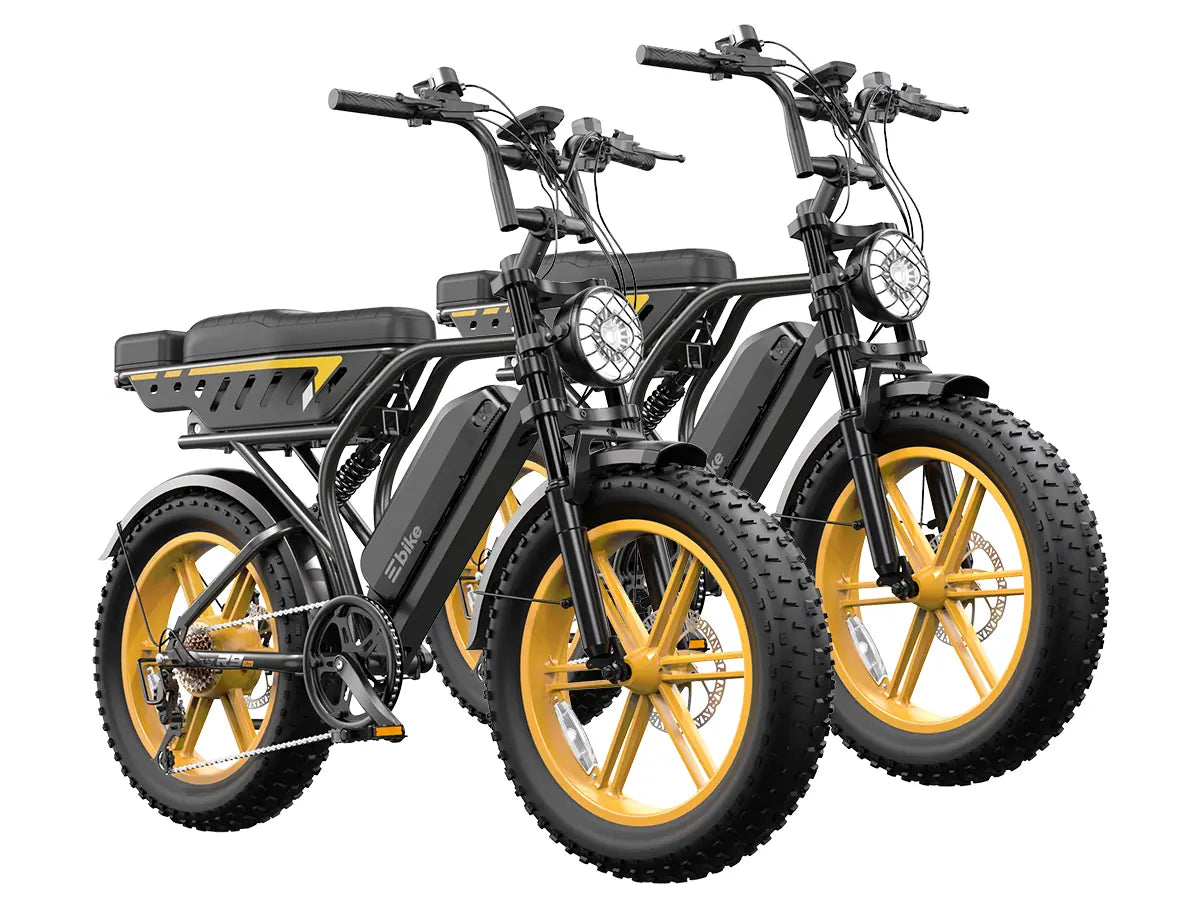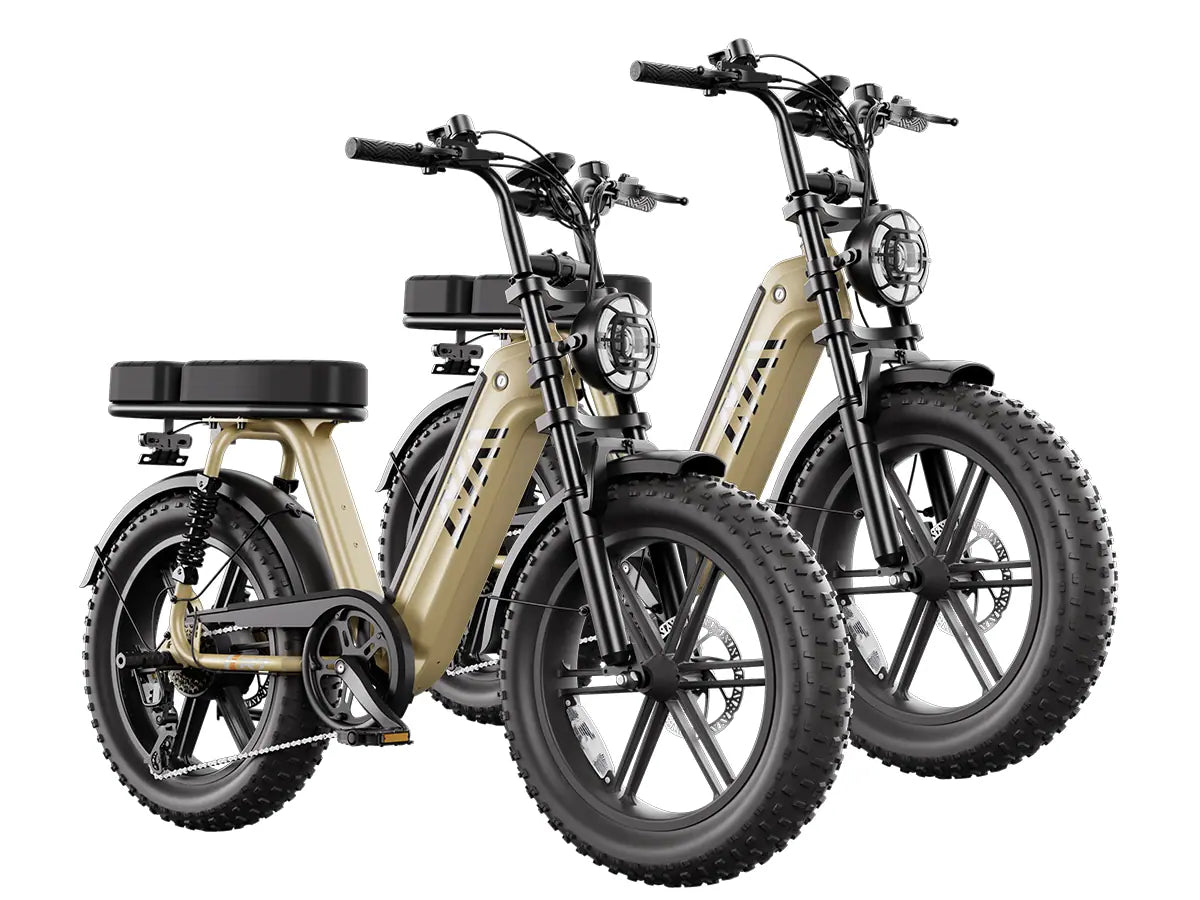Electric bikes combine traditional cycling with electric motor assistance, making rides easier and longer. They come in various types and classes to suit different terrains and rider preferences. Brands like TST EBike provide affordable, high-quality electric bikes designed to meet diverse needs, including models with 26-inch and 27-inch tires for rough terrains and daily commuting. How To Integrate Folding Ebikes With Transit?
What Are Electric Bikes and How Do They Work?
Electric bikes are bicycles equipped with an electric motor and battery that assist pedaling. They operate in pedal-assist or throttle modes, reducing rider effort and enabling longer distances or easier climbs. The motor engages when you pedal or via a throttle, powered by a rechargeable battery integrated into the bike frame.
Which Types of Electric Bikes Are Available and What Are Their Uses?
Electric bikes come in various styles: city e-bikes for commuting and errands; mountain e-bikes for off-road trails; road e-bikes for speed and fitness; hybrid e-bikes, blending road and mountain features; cruisers for relaxed rides; cargo e-bikes for hauling; and folding e-bikes for portability. Each suits different terrains and riding goals.
Electric bikes come in multiple types tailored to specific uses:
- City eBikes: Designed for urban commuting with features like racks and lights.
- Mountain eBikes (eMTBs): Built for rugged trails with suspension and powerful motors.
- Road eBikes: Lightweight and fast for paved roads and fitness rides.
- Hybrid eBikes: Versatile for mixed terrains, combining comfort and performance.
- Fat Tire eBikes: Equipped with wide tires for snow, sand, and rough terrain.
- Folding eBikes: Compact for easy storage and transport.
- Cargo eBikes: Designed to carry heavy loads or passengers.
How Do Different Classes of Electric Bikes Affect Riding Experience and Regulations?
E-bikes are classified as Class 1 (pedal-assist, up to 20 mph), Class 2 (throttle-assist, up to 20 mph), and Class 3 (pedal-assist, up to 28 mph). These classes determine where you can legally ride—Class 1 and 2 typically have wider trail access, while Class 3 is often restricted to roads and bike lanes with speed regulations.
Electric bikes are classified into three main classes based on motor assistance and speed:
| Class | Pedal Assist | Throttle | Max Speed | Typical Use |
|---|---|---|---|---|
| 1 | Yes | No | 20 mph | Most common, allowed widely |
| 2 | Yes | Yes | 20 mph | Includes throttle mode |
| 3 | Yes | No | 28 mph | Faster, for commuters |
Class 1 eBikes are the most universally accepted on bike paths, while Class 3 offers higher speeds but may face more restrictions.
What Are the Key Components That Define Electric Bikes?
Key e-bike components include a motor (hub or mid-drive), a battery (typically lithium-ion), a controller regulating power, and sensors for pedal assist. Quality brakes (often hydraulic disc), frame design, suspension, and drivetrain also define performance and comfort, tailored to riding style and terrain.
The main components of electric bikes include:
- Motor: Usually hub or mid-drive, providing power assistance.
- Battery: Lithium-ion batteries vary in capacity, determining range.
- Controller: Manages power delivery and user interface.
- Frame and Tires: Designed for specific terrains and rider comfort.
| Component | Description | Importance |
|---|---|---|
| Motor | Rear hub or mid-drive | Power and torque for assistance |
| Battery | Lithium-ion, capacity varies | Range and ride duration |
| Controller | Controls motor power delivery | Smoothness and responsiveness |
| Tires | Size and tread vary by model | Traction and ride comfort |
How Should You Choose the Best Electric Bike for Your Needs?
Choose based on your intended use (commuting, off-road, cargo), terrain, and desired speed. Consider motor power, battery range, weight, and comfort features like suspension and frame geometry. Test ride models to ensure fit, and review local laws regarding e-bike classifications and permitted riding areas.
Selecting the right electric bike depends on:
- Intended use: Commuting, off-road, cargo, or leisure.
- Terrain: Smooth roads or rugged trails.
- Battery range: Distance you plan to travel per charge.
- Motor power: Higher wattage for hills or heavy loads.
- Comfort features: Suspension, seating, and frame size.
- Tire size: For example, TST EBike offers 26-inch tires for rough terrain and 27-inch tires for commuting and mountain biking.
What Maintenance Does an Electric Bike Require?
Regular maintenance includes checking and inflating tires, lubricating and cleaning the chain and drivetrain, inspecting brakes, and keeping the battery charged and connections clean. Protect electrical components from moisture, perform periodic tune-ups, and follow manufacturer guidelines for battery care to ensure longevity and safe operation.
Regular maintenance includes:
- Checking tire pressure and brakes.
- Lubricating chains and drivetrain.
- Battery care: charging properly and avoiding deep discharges.
- Periodic professional check-ups for motor and electronics.
Where Can You Buy Reliable Electric Bikes Like TST EBike?
Reliable electric bikes, such as those from TST EBike, can be purchased online and in physical stores. TST EBike, founded in California, offers high-power, cost-effective electric bikes with excellent quality control. Their models suit various terrains, with warehouses in California and distribution in over 10 countries. What terrains can these off-road eBikes handle?
What Are Expert Opinions on TST EBike and Its Models?
"TST EBike excels by integrating consumer feedback into product design, delivering electric bikes that balance power, affordability, and durability," says a cycling industry expert. "Their 26-inch and 27-inch models cater well to both rugged terrain riders and daily commuters, making them a versatile choice for adults seeking value and performance."
Buying Tips
When buying electric bikes, consider:
- Your primary riding environment and terrain.
- Battery capacity and expected range.
- Motor power relative to your needs.
- Comfort and adjustability features.
- Warranty and after-sales support.
- Reviews and expert opinions, especially from trusted brands like TST EBike that emphasize quality and consumer satisfaction.
Frequently Asked Questions About Electric Bikes
Q: How far can electric bikes typically travel on a single charge?
A: Most electric bikes offer a range between 20 to 50 miles depending on battery size, terrain, and level of motor assistance.
Q: Are electric bikes suitable for all ages?
A: Yes, electric bikes are designed for a wide range of riders, with some models offering stability features ideal for seniors.
Q: Do electric bikes require a license?
A: Generally, no license is needed for Class 1 and Class 2 electric bikes, but local laws vary.
Q: Can electric bikes be used in rough terrains?
A: Yes, models with larger tires like 26-inch fat tires are designed for snow, sand, and off-road use.
Q: How heavy are electric bikes compared to traditional bikes?
A: Electric bikes are heavier due to motors and batteries but remain manageable for most adults.




























Leave a comment
This site is protected by hCaptcha and the hCaptcha Privacy Policy and Terms of Service apply.